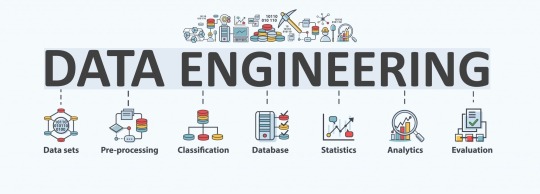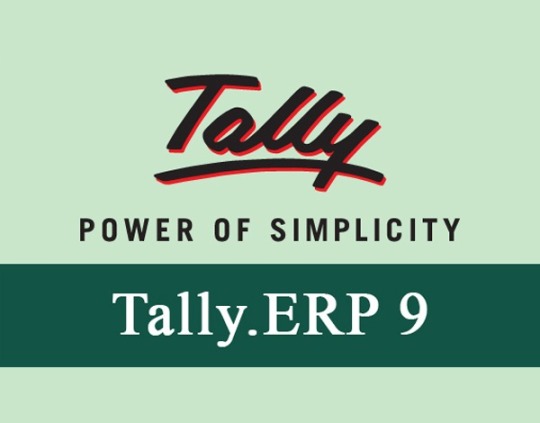#online php script
Explore tagged Tumblr posts
Text
How To Create an Online Community with SocialEngine

The blog titled “So you want to create a Social Network, and you want it to be vibrant” offers a candid and practical guide to building a successful online community. The author emphasizes that there is no foolproof formula for community growth due to the unpredictable nature of human behavior and trends. Instead, the blog presents a set of actionable strategies grounded in personal experience, encouraging an open discussion among readers.
1. Build Around Your Passion: The blog's first piece of advice is to create a community centered on something you are genuinely passionate about. The author argues that passion is essential because, as the community leader, your enthusiasm will directly influence the community's growth and sustainability. Even if the idea is not overtly marketable, the vastness of the internet ensures that a passionate niche audience exists. When the community reflects something you love, the lines between work and leisure blur, keeping you motivated and engaged.
2. Leverage Existing Networks: The author suggests using platforms like Facebook and Twitter as springboards rather than direct competitors. These platforms have massive user bases that can serve as pools of potential members for your niche community. However, the blog cautions that merely having followers on these networks doesn’t automatically translate to website traffic. The key lies in engaging these audiences effectively, presenting your community as a valuable niche alternative to mainstream platforms.
3. Prioritize Slow and Steady Growth: Contrary to the popular belief that rapid growth is essential in the tech world, the blog advocates for a gradual growth strategy. Drawing a parallel to the classic tortoise and hare fable, the author argues that rapid, fad-driven growth often leads to unsustainable communities that collapse as quickly as they rise. Analyzing data from SocialEngine sites, the author notes a common pattern: an initial surge in sign-ups that tapers off over time. The focus should be on retaining this initial wave of users and turning them into loyal core members who can sustain the community’s growth.
4. Incentivize User Promotion: To expand beyond the core user base, the blog recommends implementing incentives to encourage users to invite their friends. These incentives don’t have to be extravagant but should align with the community’s theme. For instance, a coffee-focused community could offer a raffle for unique coffee products, while a fandom-based group might give away themed merchandise. This strategy mirrors Reddit's use of "karma," which has no real-world value but effectively drives engagement.
Conclusion: Open Discussion Encouraged: The blog wraps up by inviting readers to share their opinions, emphasizing that the ideas presented are open for debate. This call for discussion not only encourages reader engagement but also reinforces the notion that building a community is a collaborative and evolving process.
Overall, the blog combines practical advice with a conversational tone, making it a relatable guide for anyone looking to build a vibrant online community.
For more details, kindly visit:- How To Create an Online Community with SocialEngine
Mail us at [email protected] to schedule a quote and become the owner of your best social network site.
#Create an online community#Social Network Site#Social Network Software#Social Networking Software#Social Networking PHP Script
0 notes
Text
How Our Best Dating Script Can Help You Launch a Successful Dating Site

The online dating market is thriving, with millions of individuals looking to connect across several platforms. If you're an entrepreneur who wants to capitalize on this expanding industry, starting your own dating website might be a profitable venture. However, creating a dating platform from scratch may be difficult and time-intensive. This is where our most effective dating script comes in. In this article, we'll look at how utilizing our dating script may help you launch your site smoothly and efficiently.
Why Choose a Dating Script?
A best dating script is a pre-built software solution that includes all of the necessary functionality for creating and managing a dating website. It is intended to save the time, effort, and money associated with developing a platform from the ground up. Here's why using a dating script is the wise decision:
Customizable:
Most dating scripts are very configurable, so you may personalize your site to your specific niche and branding requirements.
Cost-Effective:
Creating a unique dating platform might be expensive, but adopting a script reduces expenses.
Ready-to-Use:
A dating script provides a fully working platform with minimum setup required.
Features of Our Best Dating Script
Our online dating script is filled with features that will help you deliver an exciting and smooth experience for your consumers. Here's what differentiates our solution:
User-Friendly Interface.
The success of any dating site is greatly dependent on user experience. Our script provides a simple, user-friendly interface that facilitates quick navigation. Whether they are tech-savvy or not, your audience will find the site easy to utilize.
Admin Control Panel
A dating site requires effective monitoring. Our admin panel gives you complete options for managing users, monitoring activity, and maintaining overall site performance, making it easier to operate your business efficiently.
Advanced Matching Algorithm
A robust matching system is required to link users with compatible partners. Our script contains extensive filters and matching parameters based on geography, hobbies, and preferences, resulting in highly accurate matches.
Robust Security Features
Trust is essential in online dating. To secure your users' data and privacy, our dating app script contains strong security features including encryption, two-factor authentication, and privacy settings. This ensures that the user's personal information is secure on your platform.
Mobile Compatibility
More individuals than ever before utilize dating applications via mobile devices. Our script is entirely adaptable and mobile-friendly, guaranteeing that your dating site functions properly on smartphones and tablets.
Social Media Integration
Social networking has a big impact on modern dating. Our script allows customers to simply sign up or log in using their social network accounts, making the registration process quick and simple.
Why Our Dating Script Is the Best Choice
Our dating website script stands out for its adaptability, scalability, and premium features that meet the evolving demands of entrepreneurs. Here's why it's the ideal choice for your new dating platform:
Quick Launch
Time is money; with our dating script, you can launch in days rather than months. The pre-built script allows you to begin attracting people almost immediately.
Dedicated Support
We provide complete assistance throughout the setup and post-launch phase to ensure your platform functions smoothly. From technical support to customized assistance, our staff is with you every step of the way.
Scalable Solution
Whether you're beginning small or are looking to expand, our dating script is scalable and can grow alongside your user base. As your site becomes popular, the script is capable of handling rising traffic without issues with performance.
Launching Your Dating Site with Confidence
Starting a dating site may be an exciting business venture, but having the correct tools is critical to long-term success. Our dating script provides the ideal balance of features, functionality, and customization, allowing you to create a platform that brings in people and keeps them interested.
By utilizing our high-quality dating site script, you can avoid the difficulties of bespoke programming and concentrate on expanding your business. With a high-quality, feature-rich platform, you'll be well-positioned to take advantage of the thriving online dating market.
Conclusion
If you want to start an effective dating website, our greatest dating script has everything you need. From cutting-edge features to a flawless user experience, it enables you to build a platform that stands out in the competitive online dating industry. Ready to get started? Contact us immediately to find out how our script will assist you in realizing your entrepreneurial goals.
0 notes
Text
Mastering File Uploads: A Comprehensive Guide for Efficient Sharing and Collaboration
In the digital era, sharing files has become an integral part of both personal and professional endeavors. Whether you're collaborating on a project, submitting assignments, or simply sharing memories with friends and family, knowing how to upload files efficiently can save time and streamline your workflow. In this comprehensive guide, we'll explore various methods and tools for uploading files, along with best practices to ensure smooth sharing and collaboration.
Understanding the Importance of Efficient File Uploads Before diving into the technical aspects of file uploads, it's crucial to understand why mastering this skill is essential. Efficient file uploads facilitate seamless communication, collaboration, and data management. Whether you're working remotely, collaborating with team members globally, or simply sharing files with friends, the ability to upload files quickly and securely can significantly enhance productivity and convenience.
Exploring Different Methods for File Uploads Cloud Storage Platforms: Platforms like Google Drive, Dropbox, and OneDrive offer intuitive interfaces and seamless file uploading capabilities. These platforms allow you to upload files of various formats and sizes, organize them into folders, and share them with specific individuals or groups.
Email Attachments: While email attachments remain a popular method for sharing files, they are often limited by file size restrictions. However, many email providers now offer integration with cloud storage services, allowing you to upload files to the cloud and share them via email without worrying about attachment limits.
File Transfer Protocols: For more advanced users, protocols like FTP, SFTP, and SCP provide a secure means of uploading files to a remote server. These protocols are commonly used in web development, server administration, and other technical fields.
Online Collaboration Tools: Platforms like Microsoft Teams, Slack, and Trello offer built-in file uploading features, allowing team members to share documents, images, and other files within the context of their workflow. This streamlines collaboration and ensures that everyone has access to the latest version of shared files.
Best Practices for Efficient File Uploads Organize Your Files: Maintain a well-organized folder structure to make it easy to find and manage your files. Use Descriptive Filenames: Choose descriptive filenames that accurately reflect the content of the file, making it easier for others to understand and identify. Check File Size Limits: Be aware of any file size limits imposed by your chosen upload method or platform, and compress files if necessary. Secure Your Uploads: When uploading sensitive or confidential files, ensure that you're using secure protocols and encryption to protect your data from unauthorized access. Conclusion Mastering the art of file uploads is essential for anyone who regularly collaborates, communicates, or shares files online. By understanding the different methods and tools available, as well as following best practices for efficient file management, you can streamline your workflow, enhance productivity, and ensure seamless collaboration with others. Whether you're sharing files for work, school, or personal use, efficient file uploads are the key to success in the digital age.
#Certainly#here is a list of keywords with commas added:#- create link for sharing files#- copyright sharing files#- qnap upload files#- upload files without account#- quick way to upload files#- quickbooks online upload files#- upload files to google drive#- php upload files#- powershell script to upload files to sharepoint#- python upload files to sharepoint#- postman upload files#- permission to upload files in salesforce#- box sharing files#- public ftp server to upload files#- public sftp server to upload files#- python upload files to s3#- playwright upload files#- onedrive link to upload files#- onedrive how to upload files#- onedrive can't upload files#- onedrive share link to upload files#- onedrive unable to upload files#- office depot upload files to print#- best app for sharing files#- overcast upload files#- onedrive upload files to shared folder#- online ftp server to upload files#- nginx upload files
1 note
·
View note
Text
Using PHP to develop web services
A web service is a software system that provides functionality over the web using HTTP protocols. It is essentially a remote procedure call (RPC) that is invoked by a client application. Web services are typically stateless and highly scalable.
PHP is a popular programming language that can be used to develop web services. It is a server-side language that is well-suited for developing dynamic and interactive web applications.
To develop a web service in PHP, you will need to:
Choose a web service framework. There are a number of PHP web service frameworks available, such as Laravel, Symfony, and Lumen. These frameworks provide a number of features that can help you to develop web services more efficiently, such as routing, authentication, and error handling.
Create a web service endpoint. A web service endpoint is the URL that clients will use to access your web service. You can create a web service endpoint by creating a new PHP file and defining a route for it in your web service framework.
Write the web service code. The web service code is the code that will be executed when a client calls the web service endpoint. This code will typically perform some kind of operation, such as retrieving data from a database or sending an email.
Return the results of the web service call. The results of the web service call can be returned in a variety of formats, such as JSON, XML, or HTML.
Here is a simple example of a PHP web service that returns a list of users:
PHP<?php // Require the Laravel web service framework require 'vendor/autoload.php'; // Define the web service route Route::get('/users', function() { // Get the list of users from the database $users = DB::table('users')->get(); // Return the list of users in JSON format return response()->json($users); });
To call this web service, you would simply make a GET request to the following URL:http://localhost/users
The web service would then return a JSON response containing a list of all of the users in the database.
PHP web services can be used to develop a wide variety of applications, such as:
REST APIs
SOAP APIs
XML-RPC APIs
JSON-RPC APIs
If you want to learn PHP from scratch must checkout e-Tuitions to learn PHP Language online, They can teach you PHP Language and other coding language also they have some of the best teachers for there students and most important thing you can also Book Free Demo for any class just goo and get your free demo.
#php#phpdevelopment#php programming#php script#php framework#learn php#learn coding#coding#learn coding online
0 notes
Text
Ücretsiz Scriptler
Ücretsiz Scriptler ile Web Projelerinize Güç Katın
Web projelerinizde maliyeti düşük tutarken profesyonel çözümler mi arıyorsunuz? Ücretsiz scriptler tam da bu noktada devreye giriyor! Bu yazımızda, ücretsiz script indirerek projelerinizi nasıl geliştirebileceğinizi, hangi kategorilerde scriptler bulabileceğinizi ve ücretsiz scriptlerin avantajlarını ele alacağız. Ayrıca, en popüler script kategorilerinden biri olan ücretsiz SMM panel scripti ve ücretsiz e-pin scripti örneklerinden bahsedeceğiz. Detaylar için ucretsizscriptler.com.tr adresini ziyaret edebilirsiniz.
Ücretsiz Script Nedir?
Ücretsiz scriptler, geliştiriciler tarafından paylaşılan, herhangi bir ödeme yapmadan indirip kullanabileceğiniz yazılım dosyalarıdır. Genellikle PHP, JavaScript gibi programlama dillerinde yazılan bu scriptler, hem amatör hem de profesyonel geliştiriciler için önemli bir kaynak sunar. İster bir blog sitesi, ister bir e-ticaret platformu oluşturuyor olun, ücretsiz script indir seçeneği ile başlangıç maliyetlerinizi minimuma indirebilirsiniz.
Ücretsiz Scriptlerin Avantajları
Maliyet Tasarrufu: Hiçbir lisans üreti ödemeden projelerinizi hayata geçirebilirsiniz.
Kolay Erişim: ucretsizscriptler.com.tr gibi platformlardan scriptlere kolayca ulaşabilirsiniz.
Esneklik: Scriptler üzerinde değişiklik yaparak kendi ihtiyaçlarınıza uygun hale getirebilirsiniz.
Topluluk Desteği: Popüler scriptler genellikle geniş bir geliştirici topluluğuna sahiptir, bu da karşılaştığınız sorunlara hızlı çözüm bulmanıza yardımcı olur.
Ücretsiz SMM Panel Scripti
Sosyal medya yönetimi yapmak isteyenler için ücretsiz SMM panel scripti harika bir seçenektir. Bu scriptler, sosyal medya hesaplarınızı daha etkin bir şekilde yönetmenize olanak tanır. ucretsizscriptler.com.tr adresinde bulunan SMM panel scriptleri sayesinde takipçi, beğeni, yorum gibi hizmetleri organize edebilir ve kullanıcılarınıza özel bir deneyim sunabilirsiniz.
Ücretsiz E-Pin Scripti
Online oyun veya dijital ürün satışı yapanlar için ücretsiz e-pin scripti, işlemleri otomatize etmenin en etkili yollarından biridir. Bu scriptler sayesinde müşterilerinize kolayca e-pin hizmeti sağlayabilirsiniz. Platformda bulunan scriptler, güvenli ödeme altyapıları ve kolay yönetim panelleriyle öne çıkıyor. Detaylar için hemen ucretsizscriptler.com.tr adresine göz atabilirsiniz.
Sonuç
Ücretsiz scriptler, web projelerinizde hızlı ve ekonomik çözümler sunar. Özellikle ücretsiz SMM panel scripti ve ücretsiz e-pin scripti gibi kategorilerde aradığınız tüm kaynaklara ucretsizscriptler.com.tr adresinden ulaşabilirsiniz. Şimdi siz de projelerinizi hayata geçirmek için harekete geçin ve bu harika kaynaklardan faydalanın!
3 notes
·
View notes
Text
The Evolution of PHP: Shaping the Web Development Landscape
In the dynamic world of web development, PHP has emerged as a true cornerstone, shaping the digital landscape over the years. As an open-source, server-side scripting language, PHP has played a pivotal role in enabling developers to create interactive and dynamic websites. Let's take a journey through time to explore how PHP has left an indelible mark on web development.
1. The Birth of PHP (1994)
PHP (Hypertext Preprocessor) came into being in 1994, thanks to Rasmus Lerdorf. Initially, it was a simple set of Common Gateway Interface (CGI) binaries used for tracking visits to his online resume. However, Lerdorf soon recognized its potential for web development, and PHP evolved into a full-fledged scripting language.
2. PHP's Role in the Dynamic Web (Late '90s to Early 2000s)
In the late '90s and early 2000s, PHP began to gain prominence due to its ability to generate dynamic web content. Unlike static HTML, PHP allowed developers to create web pages that could interact with databases, process forms, and provide personalized content to users. This shift towards dynamic websites revolutionized the web development landscape.
3. The Rise of PHP Frameworks (2000s)
As PHP continued to grow in popularity, developers sought ways to streamline and standardize their development processes. This led to the emergence of PHP frameworks like Laravel, Symfony, and CodeIgniter. These frameworks provided structured, reusable code and a wide range of pre-built functionalities, significantly accelerating the development of web applications.
4. PHP and Content Management Systems (CMS) (Early 2000s)
Content Management Systems, such as WordPress, Joomla, and Drupal, rely heavily on PHP. These systems allow users to create and manage websites with ease. PHP's flexibility and extensibility make it the backbone of numerous plugins, themes, and customization options for CMS platforms.
5. E-Commerce and PHP (2000s to Present)
PHP has played a pivotal role in the growth of e-commerce. Platforms like Magento, WooCommerce (built on top of WordPress), and OpenCart are powered by PHP. These platforms provide robust solutions for online retailers, allowing them to create and manage online stores efficiently.
6. PHP's Contribution to Server-Side Scripting (Throughout)
PHP is renowned for its server-side scripting capabilities. It allows web servers to process requests and deliver dynamic content to users' browsers. This server-side scripting is essential for applications that require user authentication, data processing, and real-time interactions.
7. PHP's Ongoing Evolution (Throughout)
PHP has not rested on its laurels. It continues to evolve with each new version, introducing enhanced features, better performance, and improved security. PHP 7, for instance, brought significant speed improvements and reduced memory consumption, making it more efficient and appealing to developers.
8. PHP in the Modern Web (Present)
Today, PHP remains a key player in the web development landscape. It is the foundation of countless websites, applications, and systems. From popular social media platforms to e-commerce giants, PHP continues to power a significant portion of the internet.
9. The PHP Community (Throughout)
One of PHP's strengths is its vibrant and active community. Developers worldwide contribute to its growth by creating libraries, extensions, and documentation. The PHP community fosters knowledge sharing, making it easier for developers to learn and improve their skills.
10. The Future of PHP (Ongoing)
As web technologies continue to evolve, PHP adapts to meet new challenges. Its role in serverless computing, microservices architecture, and cloud-native applications is steadily increasing. The future holds exciting possibilities for PHP in the ever-evolving web development landscape.
In conclusion, PHP's historical journey is interwoven with the evolution of web development itself. From its humble beginnings to its current status as a web development powerhouse, PHP has not only shaped but also continues to influence the internet as we know it. Its versatility, community support, and ongoing evolution ensure that PHP will remain a vital force in web development for years to come.
youtube
#PHP#WebDevelopment#WebDev#Programming#ServerSide#ScriptingLanguage#PHPFrameworks#CMS#ECommerce#WebApplications#PHPCommunity#OpenSource#Technology#Evolution#DigitalLandscape#WebTech#Coding#Youtube
30 notes
·
View notes
Text
What Is Linux Web Hosting? A Beginner's Guide
In the ever-evolving digital landscape, the choice of web hosting can significantly impact your online presence. One of the most popular options available is Linux web hosting. But what exactly does it entail, and why is it so widely preferred? This beginner’s guide aims to demystify Linux web hosting, its features, benefits, and how it stands against other hosting types.
Introduction to Web Hosting
Web hosting is a fundamental service that enables individuals and organisations to make their websites accessible on the internet. When you create a website, it consists of numerous files, such as HTML, images, and databases, which need to be stored on a server. A web host provides the server space and connectivity required for these files to be accessed by users online.
There are several types of web hosting, each designed to cater to different needs and budgets. Shared hosting is a cost-effective option where multiple websites share the same server resources. Virtual Private Server (VPS) hosting offers a middle ground, providing dedicated portions of a server for greater performance and control. Dedicated hosting provides an entire server exclusively for one website, ensuring maximum performance but at a higher cost. Cloud hosting uses multiple servers to balance the load and maximise uptime, offering a scalable solution for growing websites.
Web hosting services also include various features to enhance the performance and security of your website. These can range from basic offerings like email accounts and website builders to more advanced features like SSL certificates, automated backups, and DDoS protection. The choice of web hosting can significantly influence your website’s speed, security, and reliability, making it crucial to choose a solution that aligns with your specific requirements.
Understanding the different types of web hosting and the features they offer can help you make an informed decision that suits your needs. Whether you are running a personal blog, a small business website, or a large e-commerce platform, selecting the right web hosting service is a critical step in establishing a successful online presence.
What Is Linux Web Hosting?
Linux web hosting is a type of web hosting service that utilises the Linux operating system to manage and serve websites. Renowned for its open-source nature, Linux provides a stable and secure platform that supports a wide array of programming languages and databases, making it a favoured choice amongst developers and businesses. This hosting environment typically includes support for popular technologies such as Apache web servers, MySQL databases, and PHP scripting, which are integral to modern website development.
One of the distinguishing features of Linux web hosting is its cost-effectiveness. As an open-source system, Linux eliminates the need for costly licensing fees associated with proprietary software, thereby reducing overall hosting expenses. This makes it an attractive option for individuals and organisations operating on a budget.
Moreover, Linux is celebrated for its robust performance and high stability. Websites hosted on Linux servers experience less downtime and faster loading times, which are critical factors for maintaining user engagement and search engine rankings. The operating system’s extensive community of developers continuously works on updates and improvements, ensuring that Linux remains a cutting-edge choice for web hosting.
Linux web hosting also offers considerable flexibility and customisation options. Users have the freedom to configure their hosting environment to meet specific needs, whether they are running simple static websites or complex dynamic applications. This versatility extends to compatibility with various content management systems (CMS) like WordPress, Joomla, and Drupal, which often perform optimally on Linux servers.
In summary, Linux web hosting provides a reliable, secure, and cost-effective solution that caters to a diverse range of web hosting requirements. Its compatibility with essential web technologies and its inherent flexibility make it a preferred choice for many web developers and site owners.
Key Benefits of Linux Web Hosting
Linux web hosting offers several compelling advantages that contribute to its widespread adoption. One of its primary benefits is cost-effectiveness. The open-source nature of Linux eliminates the need for expensive licensing fees, allowing users to allocate their resources more efficiently. This makes it an ideal choice for individuals and organisations with budget constraints. Additionally, Linux is celebrated for its high stability and robust performance. Websites hosted on Linux servers often experience minimal downtime and faster loading speeds, which are essential for maintaining user engagement and achieving favourable search engine rankings.
Another significant benefit is the extensive community support that comes with Linux. The active community of developers and enthusiasts continuously works on updates, patches, and security enhancements, ensuring that Linux remains a secure and reliable platform for web hosting. This ongoing development also means that any issues or vulnerabilities are promptly addressed, offering peace of mind for website owners.
Flexibility is another key advantage of Linux web hosting. The operating system supports a wide range of programming languages, including PHP, Python, and Ruby, making it suitable for various types of web applications. Additionally, Linux servers are highly customisable, allowing users to configure their environment to meet specific needs, whether they are running simple static sites or complex dynamic applications.
Moreover, Linux web hosting is highly compatible with popular content management systems (CMS) like WordPress, Joomla, and Drupal. This compatibility ensures that users can easily deploy and manage their websites using these platforms, benefiting from their extensive plugin and theme ecosystems.
Lastly, Linux's superior security features are worth noting. The operating system is inherently secure and offers various built-in security measures. When combined with best practices such as regular updates and strong passwords, Linux web hosting provides a highly secure environment for any website.
Understanding Linux Distributions in Web Hosting
Linux comes in a variety of distributions, each tailored to meet specific needs and preferences. Among the most popular for web hosting are Ubuntu, CentOS, and Debian. Ubuntu is celebrated for its ease of use and extensive community support, making it a great choice for those new to Linux. CentOS, a favourite in enterprise environments, offers impressive stability and long-term support, which ensures a dependable hosting experience. Debian stands out with its robust package management system and commitment to open-source principles, providing a reliable and secure foundation.
Each distribution brings its own strengths to the table. For example, Ubuntu’s frequent updates ensure access to the latest features and security patches, while CentOS’s extended support cycles make it a solid choice for those requiring a stable, long-term hosting environment. Debian’s extensive repository of packages and minimalistic approach offers flexibility and customisation, catering to the needs of experienced users.
Selecting the right Linux distribution largely depends on your specific requirements and technical expertise. If you prioritise user-friendliness and a wealth of resources for troubleshooting, Ubuntu might be the ideal pick. On the other hand, if you need a rock-solid, stable platform for an enterprise-level application, CentOS could be more appropriate. For those seeking maximum control and a commitment to open-source principles, Debian is a compelling option.
Ultimately, understanding the nuances of these distributions will enable you to choose a Linux environment that aligns with your web hosting needs, ensuring optimal performance and reliability.
Linux Hosting vs Windows Hosting: A Comparative Analysis
When evaluating Linux hosting against Windows hosting, several critical factors come into play. Cost is a significant differentiator; Linux hosting is generally more affordable due to its open-source nature, which eliminates the need for expensive licensing fees. In contrast, Windows hosting often incurs additional costs related to proprietary software licenses.
Compatibility is another important aspect to consider. Linux hosting is renowned for its compatibility with a broad array of open-source software and applications, including popular content management systems like WordPress, Joomla, and Magento. These platforms typically perform better on Linux servers due to optimised server configurations. On the other hand, Windows hosting is the go-to option for websites that rely on Microsoft-specific technologies such as ASP.NET, MSSQL, and other .NET frameworks.
Performance and stability are also crucial elements in this comparison. Linux hosting often provides superior uptime and faster loading speeds due to the lightweight nature of the Linux operating system. The robust performance of Linux servers is further enhanced by the active community that continuously works on optimisations and security patches. Windows hosting, while also reliable, can sometimes be more resource-intensive, potentially affecting performance.
Customisation and control levels differ significantly between the two. Linux offers greater flexibility and customisation options, allowing users to tweak server settings and configurations extensively. This level of control is particularly beneficial for developers who need a tailored hosting environment. Conversely, Windows hosting is typically easier to manage for those familiar with the Windows operating system but may offer less flexibility in terms of customisation.
Security measures also vary between Linux and Windows hosting. Linux is often praised for its strong security features, which are bolstered by a large community dedicated to promptly addressing vulnerabilities. While Windows hosting is secure, it may require more frequent updates and maintenance to ensure the same level of protection.
Common Use Cases for Linux Web Hosting
Linux web hosting is versatile and caters to a broad range of applications, making it a popular choice across various sectors. One of the most common use cases is hosting blogs and personal websites, particularly those built on platforms like WordPress. The open-source nature of Linux and its compatibility with PHP make it an ideal environment for WordPress, which powers a significant portion of the web.
E-commerce websites also benefit greatly from Linux web hosting. Solutions like Magento, PrestaShop, and OpenCart often perform better on Linux servers due to their need for a robust, secure, and scalable hosting environment. The flexibility to configure server settings allows online store owners to optimise performance and ensure a smooth shopping experience for their customers.
Content Management Systems (CMS) such as Joomla and Drupal are another prime use case. These systems require reliable and flexible hosting solutions to manage complex websites with large amounts of content. Linux's support for various databases and scripting languages ensures seamless integration and optimal performance for CMS-based sites.
Developers frequently turn to Linux web hosting for custom web applications. The operating system supports a variety of programming languages, including Python, Ruby, and Perl, making it suitable for a wide array of development projects. Its command-line interface and extensive package repositories allow developers to install and manage software efficiently.
Additionally, Linux web hosting is commonly used for educational and non-profit websites. The low cost and high reliability make it a practical choice for schools, universities, and charitable organisations that need a dependable online presence without breaking the bank.
Setting Up a Linux Web Hosting Environment
Setting up a Linux web hosting environment can be straightforward with the right approach. Begin by selecting a reputable hosting provider that offers Linux-based plans. After signing up, you'll typically be granted access to a control panel, such as cPanel or Plesk, which simplifies the management of your hosting environment. Through the control panel, you can manage files, databases, email accounts, and more.
Next, if you're using a content management system (CMS) like WordPress, Joomla, or Drupal, you can often find one-click installation options within the control panel. This feature makes it easy to get your website up and running quickly. Additionally, ensure that you configure your domain name to point to your new hosting server, which usually involves updating your domain's DNS settings.
For those who prefer more control or are comfortable using the command line, you can manually set up your web server using SSH access. This method allows you to install and configure web server software like Apache or Nginx, as well as databases such as MySQL or PostgreSQL.
Regardless of the setup method you choose, it's crucial to secure your server from the outset. This includes setting up a firewall, enabling SSH key authentication for secure access, and regularly updating all software to protect against vulnerabilities. Regularly monitoring your server's performance and security logs can help you stay ahead of potential issues, ensuring a stable and secure hosting environment for your website.
Security Best Practices for Linux Web Hosting
Securing your Linux web hosting environment is paramount to safeguarding your website against potential threats. Begin by ensuring your server software and all installed applications are up to date. Regular updates often include patches for security vulnerabilities, making this a critical step. Utilise strong, unique passwords for all user accounts, and consider employing SSH key authentication for added security when accessing your server remotely.
Setting up a firewall is another essential measure. Tools like iptables or firewalld can help you configure firewall rules to control incoming and outgoing traffic, thereby reducing the risk of unauthorised access. Implementing intrusion detection systems (IDS), such as Fail2Ban, can provide an additional layer of security by monitoring and blocking suspicious activities.
Consider deploying an SSL certificate to encrypt data transmitted between your server and users' browsers. This not only enhances security but also boosts user trust and can improve your search engine rankings. Additionally, limit the use of root privileges; create separate user accounts with the necessary permissions to minimise potential damage in the event of a breach.
Regularly backup your data to mitigate the impact of data loss due to hardware failure, cyber-attacks, or human error. Automated backup solutions can simplify this process, ensuring your data is consistently protected. Monitoring your server's logs can also be invaluable for identifying unusual activity early. Tools like Logwatch or the ELK Stack can assist in log management and analysis, enabling you to take swift action if anomalies are detected.
Common Challenges and How to Overcome Them
Setting up and maintaining a Linux web hosting environment can present various challenges, especially for those new to the platform. One frequent issue is navigating the command line, which can be daunting for beginners. Engaging with online tutorials, forums, and communities like Stack Overflow can be invaluable for learning the basics and troubleshooting problems. Another common challenge is software incompatibility. Ensuring your web applications are compatible with the Linux distribution you choose is crucial; consulting documentation and support resources can help mitigate these issues.
Security configuration can also be a complex task. Implementing best practices such as setting up firewalls, regular updates, and using strong authentication methods requires a good understanding of Linux security principles. Managed hosting services can offer a solution here by handling these technical aspects for you, allowing you to focus on your website content.
Resource management is another area where users might struggle. Monitoring server performance and managing resources effectively ensures your website runs smoothly. Utilising monitoring tools and performance optimisation techniques can help you stay ahead of potential issues. Lastly, when it comes to server backups, regular, automated solutions are essential to prevent data loss and minimise downtime. Being proactive in addressing these challenges will ensure a more seamless and secure Linux web hosting experience.
Popular Control Panels for Linux Web Hosting
Control panels are invaluable for simplifying the management of your Linux web hosting environment. Among the most popular are cPanel, Plesk, and Webmin. cPanel is renowned for its intuitive interface and extensive feature set, making it a favourite among users who need a straightforward yet powerful management tool. Plesk offers robust functionality and supports both Linux and Windows servers, providing versatility for those who manage multiple server environments. Webmin stands out as a free, open-source option that allows comprehensive server management through a web interface, catering to those who prefer a customisable and cost-effective solution. Each control panel brings unique strengths, helping to streamline tasks such as file management, database administration, and security configurations.
Choosing the Right Linux Web Hosting Provider
Choosing the right Linux web hosting provider involves several key considerations. Firstly, evaluate the quality of customer support offered. Responsive and knowledgeable support can be invaluable, especially when troubleshooting technical issues or during the initial setup phase. Check if the provider offers 24/7 support and multiple contact methods such as live chat, email, and phone.
Another crucial factor is the security measures in place. Opt for providers that offer robust security features, including regular backups, SSL certificates, firewalls, and DDoS protection. These features help safeguard your website against potential threats and ensure data integrity.
Reliability and uptime guarantees are also vital. Aim for providers that offer at least a 99.9% uptime guarantee, as frequent downtimes can significantly affect your website’s accessibility and user experience. Additionally, look into the provider’s data centre infrastructure and redundancy measures, which can impact overall performance and reliability.
Scalability is another important aspect to consider. As your website grows, you’ll need the flexibility to upgrade your hosting plan seamlessly. Check if the provider offers scalable solutions, such as easy transitions to VPS or dedicated hosting, without causing disruptions to your site.
Lastly, consider the hosting plans and pricing structures available. While cost-effectiveness is a significant benefit of Linux web hosting, ensure the plans align with your specific needs. Compare the features, storage, bandwidth, and other resources included in different plans to find the best value for your money.
Reading customer reviews and seeking recommendations can also provide insights into the provider’s reputation and service quality. By carefully evaluating these factors, you can choose a Linux web hosting provider that meets your requirements and supports your online endeavours effectively.
Conclusion and Final Thoughts
Linux web hosting stands out as an optimal choice for both beginners and seasoned web developers. Its open-source nature provides an affordable, highly customisable, and secure environment, suitable for a diverse range of websites, from personal blogs to large e-commerce platforms. The extensive community support ensures ongoing improvements and prompt resolution of issues, contributing to its reliability and performance. Choosing the right hosting provider is crucial; look for robust security measures, excellent customer support, and scalability to accommodate your website's growth. By leveraging the strengths of Linux web hosting, you can build a resilient and efficient online presence that meets your specific needs and goals.
4 notes
·
View notes
Text
Understanding the Difference Between a Website and a Web Page: A Complete Guide
Understanding the Difference Between a Website and a Web Page: A Complete Guide
In today’s digital landscape, terms like website and web page are used interchangeably, often causing confusion among businesses and individuals seeking an online presence. However, as a business owner or a digital marketer, understanding the difference is essential for creating an impactful online strategy.
At KSoft Technologies, where we specialize in website development, digital marketing, and SEO services, we often encounter this question from clients. This guide not only simplifies the distinction between a website and a web page but also explores their technical aspects and how they align with your business goals.
What is a Website?
A website is a collection of interlinked web pages hosted under a single domain name, designed to serve a specific purpose. Think of it as a digital storefront or an online hub that provides a comprehensive experience to users. Websites can vary significantly based on their type and functionality:
Corporate Websites Ideal for businesses aiming to showcase their products, services, and achievements. For example, the KSoft Technologies website highlights our expertise in areas like SEO, app development, and web design.
E-Commerce Websites Platforms like Amazon or Shopify allow businesses to sell products directly to customers. These websites integrate payment gateways, inventory management systems, and customer service functionalities.
Portfolio Websites Focused on showcasing individual or business achievements, these websites are ideal for freelancers or creative professionals.
Landing Pages Dedicated pages within a website that focus on lead generation and conversions, often used in digital marketing campaigns.
Blogs and Forums Content-centric websites aimed at providing information, engaging with communities, or building authority in a niche.
Technical Structure of a Website
A website comprises:
Domain Name: The unique address users type in to access the site (e.g., ksofttechnologies.com).
Hosting Server: Where all the data and files of the website are stored.
Content Management System (CMS): Tools like WordPress or Joomla that allow users to create and manage content.
Backend and Frontend: The backend involves server-side scripting (e.g., PHP, Python), while the frontend includes design elements (e.g., HTML, CSS, JavaScript).
What is a Web Page?
A web page is a single document within a website, identifiable by its unique URL. For example, on ksofttechnologies.com, the “Contact Us” page or “Services” page is a web page.
Types of Web Pages
Static Pages Content remains the same unless manually updated. They’re ideal for information like company profiles or mission statements.
Dynamic Pages Content is fetched from a database and changes based on user interaction. Examples include dashboards or search results pages.
Landing Pages Specifically designed for marketing campaigns, focusing on a single product, service, or call to action.
Blog Posts Individual articles or write-ups focused on specific topics within a blog section of a website.
Technical Structure of a Web Page
Each web page includes:
URL Structure: For example, https://ksofttechnologies.com/services.
HTML Markup: Defines the structure and content of the page.
CSS and JavaScript: For styling and functionality.
Metadata: Helps search engines understand the page content.
Key Differences Between a Website and a Web Page
Definition
Website: A collection of multiple interlinked web pages.
Web Page: A single document within a website.
Scope
Website: Broader; provides comprehensive information or services.
Web Page: Narrower; focuses on a specific topic or purpose.
URL
Website: Main domain name (e.g., ksofttechnologies.com).
Web Page: A subset URL (e.g., /services, /about-us).
Interactivity
Website: Enables complex user interactions.
Web Page: May have limited or single-point interactions.
Purpose
Website: Serves as the entire digital presence.
Web Page: Addresses a specific intent or question.
How Websites and Web Pages Work Together
To draw an analogy, a website is like a library, while web pages are the individual books or chapters within it. Each web page serves a specific purpose and contributes to the overall functionality of the website.
Example from KSoft Technologies
Website Level: Visitors land on ksofttechnologies.com, where they see an overview of our services like web development, app design, and SEO consulting.
Web Page Level: When they click on "Digital Marketing," they are directed to a dedicated page detailing our strategies, success stories, and packages.
Why Understanding the Difference Matters
For businesses, distinguishing between a website and a web page is crucial for:
Better SEO Strategy Search engines like Google evaluate websites and individual web pages differently. Optimizing individual pages for keywords (e.g., “website development services”) improves rankings and traffic.
User Experience Creating well-structured websites and easy-to-navigate web pages ensures a seamless user journey.
Content Strategy Knowing the role of each web page within your website helps in creating targeted and engaging content.
SEO Best Practices for Websites and Web Pages
Keyword Optimization Include relevant keywords like “website development,” “SEO services,” and “digital marketing agency” in titles, headings, and content.
Internal Linking Link related web pages within your website to improve navigation and reduce bounce rates.
Responsive Design Ensure your website and all web pages are optimized for mobile devices.
Page Load Speed Use tools like Google PageSpeed Insights to identify and fix issues.
Content Quality Provide valuable and actionable content for visitors, such as this guide explaining technical concepts.
How KSoft Technologies Can Help
At KSoft Technologies, we understand that your website is the cornerstone of your digital presence. Whether you need a user-friendly corporate website, high-converting e-commerce platform, or optimized web pages for SEO, our team of experts is here to help.
Our services include:
Website Design and Development: Tailored to your brand and business goals.
SEO Services: Ensuring your web pages rank high for targeted keywords.
Content Strategy: Helping you create engaging, keyword-rich content for better rankings and user retention.
Conclusion
While a website is the broader digital presence, web pages are its building blocks. Understanding the distinction between the two helps in planning and executing a robust online strategy. By leveraging the expertise of KSoft Technologies, you can ensure that your website and web pages work seamlessly to drive traffic, generate leads, and grow your business.
#ecommerce#web design#webpage#website#branding#web development#erp software#adobe#seo services#google ads
3 notes
·
View notes
Text
Best IT Courses In Bhubaneswar:- seeree services pvt ltd.
Introduction:- seeree is one of the best IT training institute and Software industry, features completely Industrial training on Python , PHP , .NET , C Programming,Java , IOT , AI , GD PI , ORACLE and ALL CERTIFICATION COURSES as well as provides seminar,cultural activity and jobs
Courses we provided:- 1) Java Fullstack 2) Python Fullstack 3) PHP Fullstack 4) Preplacement Training & Sp. Eng 5) .NET Fulstack 6) SEO/Digital Marketing 7) SAP 8) MERN 9) Software Testing 10)Data Analyst 11)Data Science 12)Data Engineering 13)PGDCA 14)Tally 15)Graphics Design
Course1:- Java Fullstack

A Class in Java is where we teach objects how to behave. Education at seeree means way to success. The way of teaching by corporate trainers will bloom your career. We have the best java training classes in Bhubaneswar. 100% Placement Support. Job Support Post Training. This course will give you a firm foundation in Java, commonly used programming language. Java technology is wide used currently. Java is a programming language and it is a platform. Hardware or software environment in which a program runs, known as a platform. Since Java has its own Runtime Environment (JRE) and API, it is called platform. Java programming language is designed to meet the challenges of application development in the context of heterogeneous, network-wide distributed environment. Java is an object-oriented programming (OOP) language that uses many common elements from other OOP languages, such as C++. Java is a complete platform for software development. Java is suitable for enterprise large scale applications.]
Course2:- Python Fullstack

Seeree offers best python course in Bhubaneswar with 100% job assurance and low fee. Learn from real time corporate trainers and experienced faculties. Groom your personality with our faculty. Seeree helps to build confidence in students to give exposure to their skills to the company.
Python is dynamically typed , compiled and interpreted , procedural and object oriented , generalized , general-purpose , platform independent programming language. Python is a high-level, structured, open-source programming language that can be used for a wide variety of programming tasks.
Course3:- PHP Fullstack

seeree is the best training institute which provide PHP Training courses in bhubaneswar and all over odisha We aim the students to learn and grow altogether with the need of IT firms.
PHP is a server scripting language, and a powerful tool for making dynamic and interactive Web pages. PHP is a widely-used, free, and efficient alternative to competitors such as Microsoft's ASP.
Course4:- Preplacement Training & Sp. Eng

Welcome to SEEREE Institute, where excellence meets opportunity. At SEEREE, we are dedicated to providing a transformative learning experience that empowers students to achieve their goals and contribute to a brighter future.
Our institute offers cutting-edge courses designed to meet the needs of the ever-evolving global landscape. With a team of highly qualified instructors and state-of-the-art facilities, we ensure a supportive and inspiring environment for learning and growth.
Whether you're here to develop new skills, explore innovative fields, or pursue personal and professional success, SEEREE Institute is the perfect place to begin your journey. Thank you for choosing us, and we look forward to being a part of your success story.
Course5:- .NET Fullstack

Seeree offers best .NET course in Bhubaneswar with 100% job assurance and low fee. Learn from real time corporate trainers and experienced faculties. Groom your personality with our faculty. Seeree helps to build confidence in students to give exposure to their skills to the company.
Course6:- SEO/Digital Marketing

In today's fast-paced digital world, businesses thrive on visibility, engagement, and strategic online presence. At SEEREE, we empower you with the skills and knowledge to master the art of Search Engine Optimization (SEO) and Digital Marketing.
Our comprehensive program is designed for beginners and professionals alike, covering everything from keyword research, on-page and off-page SEO, and content marketing, to social media strategies, PPC campaigns, and analytics.
With hands-on training, real-world projects, and guidance from industry experts, we ensure you're equipped to drive measurable results and excel in this dynamic field.
Join us at SEEREE Institute and take the first step towards becoming a leader in the digital marketing landscape!"
Course7:- SAP

SAP refers to Systems, Applications, and Products in Data Processing. Some of the most common subjects covered in these courses include human resource software administration, database management, and business training. Obtaining SAP certification can be done on a stand-alone basis or as part of a degree program.
Course8:- MERN

Seeree offers the best MERN course in Bhubaneswar with 100% job assurance and low fees. Learn from real-time corporate trainers and experienced faculty. Seeree helps students build confidence and gain skills to excel in company roles.
Are you ready to step into the exciting world of web development? At SEEREE, we bring you a comprehensive MERN Stack course that equips you with the skills to build modern, dynamic, and responsive web applications from start to finish.
The MERN Stack—comprising MongoDB, Express.js, React.js, and Node.js—is one of the most sought-after technologies in the web development industry. Our program is designed to help you master each component of the stack, from creating robust backends and managing databases to crafting dynamic frontends and seamless APIs.
Course9:- Software Testing

Seeree offers best Testing course in Bhubaneswar with 100% job assurance and low fee. Learn from real time corporate trainers and experienced faculties. Groom your personality with our faculty. Seeree helps to build confidence in students to give exposure to their skills to the company.
In the fast-paced world of software development, ensuring the quality and reliability of applications is crucial. At SEEREE, we offer a comprehensive Software Testing course designed to equip you with the skills and techniques needed to excel in this essential field.
Our program covers all aspects of software testing, from manual testing fundamentals to advanced automation tools and frameworks like Selenium, JIRA, and TestNG. You’ll learn to identify bugs, write test cases, execute test scripts, and ensure software meets high-quality standards.
With hands-on training, real-world scenarios, and guidance from experienced industry professionals, you’ll be prepared to take on roles like Quality Assurance Engineer, Test Analyst, and Automation Tester.
Join SEEREE Institute and gain the expertise to become a key player in delivering flawless software solutions. Your journey to a rewarding career in software testing starts here!"
Course10:- Data Analyst

Seeree offers the best Data Analyst course in Bhubaneswar with 100% job assurance and affordable fees. Our comprehensive curriculum is designed to cover all aspects of data analysis, from data collection and cleaning to advanced data visualization techniques. Learn from real-time corporate trainers and experienced faculty members who bring industry insights into the classroom. Enhance your analytical skills and boost your career prospects with hands-on projects and real-world case studies. Our faculty also focuses on grooming your personality and soft skills, ensuring you are well-prepared for interviews and workplace environments. Seeree is dedicated to building confidence in students, providing them with the necessary exposure to showcase their skills to top companies in the industry.
Course11:- Data Science

Seeree offers the best Data Science course in Bhubaneswar with 100% job assurance and affordable fees. Our comprehensive curriculum is designed to cover all aspects of data science, from data collection and cleaning to advanced data visualization techniques. Learn from real-time corporate trainers and experienced faculty members who bring industry insights into the classroom. Enhance your analytical skills and boost your career prospects with hands-on projects and real-world case studies. Our faculty also focuses on grooming your personality and soft skills, ensuring you are well-prepared for interviews and workplace environments. Seeree is dedicated to building confidence in students, providing them with the necessary exposure to showcase their skills to top companies in the industry.
Course12:- Data Engineering

In the era of big data, the ability to design, build, and manage scalable data infrastructure is one of the most in-demand skills in the tech industry. At SEEREE, we are proud to offer a comprehensive Data Engineering course that prepares you for a career at the forefront of data-driven innovation.
Our program covers essential topics such as data modeling, ETL processes, data warehousing, cloud platforms, and tools like Apache Spark, Kafka, and Hadoop. You’ll learn how to collect, organize, and transform raw data into actionable insights, enabling businesses to make smarter decisions.
With real-world projects, expert mentorship, and hands-on experience with the latest technologies, we ensure that you are industry-ready. Whether you’re starting fresh or upskilling, this program will empower you to unlock opportunities in the rapidly growing field of data engineering.
Join SEEREE Institute and take the first step toward building the data pipelines that power tomorrow’s technology!"
Course13:- PGDCA

Seeree offers the best MERN course in Bhubaneswar with 100% job assurance and low fees. Learn from real-time corporate trainers and experienced faculty. Seeree helps students build confidence and gain skills to excel in company roles.
In today’s digital age, computer applications are at the heart of every industry, driving innovation and efficiency. At SEEREE Institute, our Post Graduate Diploma in Computer Applications (PGDCA) program is designed to provide you with in-depth knowledge and hands-on skills to excel in the IT world.
This program offers a comprehensive curriculum covering programming languages, database management, web development, software engineering, networking, and more. Whether you aim to enhance your technical expertise or step into a rewarding career in IT, PGDCA at SEEREE equips you with the tools to succeed.
With expert faculty, state-of-the-art labs, and real-world projects, we ensure that you gain practical experience and a strong theoretical foundation. By the end of the program, you’ll be prepared for roles such as software developer, system analyst, IT manager, or database administrator.
Course14:- Tally

Seeree offers the best Tally course in Bhubaneswar with 100% job assurance and low fees. Learn from real-time corporate trainers and experienced faculty. Seeree helps students build confidence and gain skills to excel in company roles.
In today’s business world, efficient financial management is key to success, and Tally is one of the most trusted tools for accounting and financial operations. At SEEREE Institute, we offer a comprehensive Tally course designed to equip you with the skills needed to manage business finances effortlessly.
Our program covers everything from the basics of accounting and bookkeeping to advanced features like GST compliance, inventory management, payroll processing, and generating financial reports. With hands-on training and real-world applications, you’ll gain practical expertise in using Tally effectively for businesses of any scale.
Whether you're a student, a professional, or a business owner, our Tally program is tailored to meet your needs and enhance your career prospects in the fields of accounting and finance.
Course15:- Graphics Design

In the world of creativity and communication, graphic design plays a vital role in bringing ideas to life. At SEEREE Institute, our Graphic Design course is tailored to help you unlock your creative potential and master the art of visual storytelling.
Our program covers a wide range of topics, including design principles, color theory, typography, branding, and user interface design. You’ll gain hands-on experience with industry-standard tools like Adobe Photoshop, Illustrator, and InDesign, enabling you to create stunning visuals for print, digital media, and beyond.
Whether you're an aspiring designer or a professional looking to sharpen your skills, our expert trainers and real-world projects will provide you with the knowledge and confidence to excel in this competitive field.
Join SEEREE Institute and start your journey toward becoming a skilled graphic designer. Let’s design your future together!"
2 notes
·
View notes
Text
web applicatiom development
web application development involves creating software applications that run on remote servers and are delivered to users over the internet through a web browser interface.it typically involves front end development for user interface and back end development for handling data storage and business logics .technologies typically used in web development includes HTML,CSS, java script for front head and languages like python ,ruby ,PHP for back end
The chief goal of mobile application should be to providing real and meaningful value to it’s users. This typically includes solving problems of the user, making tasks easy, or to providing better quality entertainment. A app is said to be treasured if it is providing satisfaction to the user ,regularly improves their quality of user life in Mobile applications importance can be highlighted by the smartphones as they have become one of the most crucial part of our life because to mobile application development. Technology development is making our life busier so it is difficult for us to be organized well in many tasks. However the growth of mobile application development is making our life much easier and hustle free , compactable and well organized. Now people can download anything from Google play store. There are many apps some are available Paid while some are free . .It has various uses such as social media, leisure apps such as online games, music and novels ,E-commerce which plays a crucial role in buying and selling. Educational apps which helps students in understanding easier all over the globe. Online bookings ,and online food delivery apps.
Conclusion . The ultimate goal of mobile application development is delivering supreme quality Apps that users finds reliable and enjoyable and finds value to the user.
2 notes
·
View notes
Text
Revolutionizing the Digital Landscape: Technoviaan Software's Comprehensive IT Services
In the ever-evolving digital landscape, businesses require innovative solutions to stay ahead of the curve. Introducing Technoviaan Software, a trailblazer in the realm of Information Technology services. With a profound expertise spanning across various cutting-edge technologies, Technoviaan Software stands as a beacon of excellence, offering unparalleled services tailored to meet the diverse needs of modern businesses.Empowering Businesses with Technological BrillianceAt Technoviaan Software, we understand the pivotal role technology plays in shaping the success of businesses in today's competitive environment. Leveraging our expertise in a multitude of technologies, we offer comprehensive IT services designed to empower businesses across various domains.Expertise in Key Technologies.NET Development: Our skilled team of developers excels in crafting robust and scalable solutions using the .NET framework. Whether it's building dynamic web applications or enterprise-level software, we ensure unparalleled performance and reliability.Java Development: With a deep-rooted understanding of Java technology, we deliver tailored solutions that drive business growth. From enterprise application development to Java-based web solutions, our expertise knows no bounds.PHP Development: Technoviaan Software pioneers in PHP development, delivering high-performance websites and applications that resonate with your audience. Our proficiency in PHP frameworks like Laravel ensures swift development cycles and exceptional results.Python Development: Python's versatility is at the core of our development philosophy. Our Python experts harness the power of this language to create data-driven solutions, machine learning algorithms, and automation scripts that propel businesses forward.Digital Marketing: In the digital realm, visibility is paramount. Technoviaan Software offers bespoke digital marketing solutions tailored to amplify your online presence. From SEO strategies to targeted PPC campaigns, we deploy tactics that drive tangible results and maximize ROI.Blockchain Development: Embrace the future of technology with our blockchain development services. Whether it's implementing smart contracts, building decentralized applications, or exploring cryptocurrency solutions, Technoviaan Software is your trusted partner in blockchain innovation.Unmatched Commitment to ExcellenceWhat sets Technoviaan Software apart is our unwavering commitment to excellence. We strive to understand the unique requirements of each client and deliver solutions that exceed expectations. With a customer-centric approach and a penchant for innovation, we forge long-lasting partnerships built on trust and mutual success.Experience the Technoviaan AdvantageIn a world where technology reigns supreme, Technoviaan Software emerges as a beacon of innovation and expertise. Whether you're a startup venturing into uncharted territories or an established enterprise seeking to revitalize your digital presence, we have the tools, the talent, and the tenacity to propel you towards success.Experience the Technoviaan advantage today and embark on a journey of digital transformation like never before. Your success is our mission, and together, we'll shape a future fueled by technological brilliance.Connect with us today and unlock the limitless possibilities of technology with Technoviaan Software.
#it services#software developers#software development#software services#software solutions#.net development#phpdevelopment#flutter app development#web development#it staffing services#technology#ios app development#android app development#Software
3 notes
·
View notes
Text
Matrimonial PHP Script - Matrimonial Website Script in PHP
At Readymatrimonial.in we specialize in providing a cutting-edge Matrimonial PHP Script, a comprehensive and feature-rich solution for creating a robust matrimonial website. Developed using PHP programming language, our Matrimonial Website Script is designed to meet the diverse needs of entrepreneurs and individuals looking to establish their online matrimonial platform.
Key Features:
1. User Registration: Our Matrimonial PHP Script enables seamless user registration, allowing individuals to create their profiles easily. Users can provide essential personal details, upload photos, and specify their preferences to find their ideal life partner.
2. Advanced Search Functionality: With our script, users can conduct advanced searches based on various criteria such as age, location, religion, caste, profession, and more. The search algorithm ensures accurate and relevant results, enhancing the matchmaking experience.
3. Profile Management: Registered users have full control over their profiles. They can manage their personal information, update their preferences, and upload or modify photos. The intuitive interface makes it effortless for users to maintain and customize their profiles.
4. Privacy and Security: We prioritize the privacy and security of user data. Our script offers robust privacy settings, allowing users to control the visibility of their profiles. We implement strict measures to safeguard user information and provide options to block or report suspicious profiles.
5. Communication Tools: Our Matrimonial PHP Script incorporates a range of communication tools to facilitate interaction between users. These tools include instant messaging, email notifications, and express interest features, enabling seamless and effective communication.
6. Membership Plans: To ensure monetization of your matrimonial website, our script provides flexible membership plans. Users can choose from various subscription levels, offering different benefits such as increased visibility, access to premium features, and highlighted profiles.
7. Success Stories: We understand the importance of success stories in building trust and credibility. Our script includes a dedicated section where users can share their success stories and testimonials, inspiring others in their quest for a life partner.
8. Mobile Responsiveness: In today's mobile-driven world, our Matrimonial PHP Script is designed to be fully responsive across devices. Users can access and use your matrimonial website seamlessly on desktops, laptops, tablets, and smartphones.
9. Powerful Admin Dashboard: Our script incorporates a comprehensive admin dashboard that empowers you to efficiently manage and monitor your matrimonial website. From reviewing and moderating user profiles to handling payments and customizing settings, you have full control over the platform.
10. Customization and Scalability: We understand that each matrimonial website has unique requirements. Our script is highly customizable, allowing you to tailor the design, layout, and features to align with your vision. Additionally, the script is scalable, enabling future expansion and integration of additional modules or plugins.
At Readymatrimonial.in we provide not just a Matrimonial PHP Script, but a comprehensive solution that empowers you to establish a successful and thriving matrimonial website. With our advanced features, user-friendly interface, and extensive customization options, you can create a platform that connects individuals in their journey towards matrimony, fostering meaningful relationships.
readmore

2 notes
·
View notes
Text
Best Online Coding Courses for Beginners in php
Best Online Coding Courses for Beginners in php over the years CodingBit has successfully completed a wide range of development projects in the finance,healthcare, Real-Estate, Event Management, Education e-commerce and retail sectors. This industry experience, combined with our expertise in the latest technologies, enables us to successfully adapt to our client’s diverse needs and makes CodingBit the best choice for offshore outsourcing company.
PHP is primarily a server-side language, but it often interacts with the frontend through HTML, CSS, and JavaScript.
Templating Engines: PHP can integrate with templating engines to separate PHP logic from HTML presentation.AJAX and PHP: PHP can handle asynchronous JavaScript (AJAX) requests, allowing you to create dynamic web applications that update parts of the page without reloadingAs a PHP developer, you'll work with a variety of tools, frameworks, and libraries to build dynamic web applications. PHP remains one of the most widely used server-side scripting languages for web development due to its simplicity and versatility. Below, I’ll go over several key areas of PHP development that are essential for any PHP developer to master, along with a breakdown of skills and practices that will help you in your career.
Email: [email protected] | [email protected]
Call: +91-951-18-03-947
Visit us: www.codingbit.com

0 notes
Text
The Evolution of the Full Stack Web Developer: Then vs. Now
Technology is moving at lightning speed, and so are the people who build it. One such pivotal role in the digital space is that of the full stack developer—a professional who juggles both the front-end and back-end of web applications. But like all things in tech, the role of the full stack developer has undergone massive transformation over the past two decades.
So, how did we get from the simple websites of the early 2000s to today’s complex, cloud-integrated, API-driven web apps? Let’s walk through the evolution of the full stack web developer: then vs. now.
Back Then: Simpler Times, Simpler Stacks
In the early days of the internet, being a full stack developer meant you were a jack-of-all-trades—but the stack was far less complicated. Websites were relatively static, and the tools were limited but manageable.
What defined a full stack developer then?
HTML, CSS, and a bit of JavaScript: These were the core technologies for building any web interface.
Backend scripting with PHP or ASP.NET: Most developers used server-side languages like PHP for form processing and basic database interactions.
Databases like MySQL: Relational databases were the go-to for storing content.
Little to no version control: Most code was shared via ZIP files or FTP uploads.
Solo development: Often, a single developer managed the entire website—from writing HTML to setting up servers.
This era was defined by simplicity, but also by limitations. Sites were slower, less interactive, and rarely mobile-friendly. Yet, in those early days, one developer could manage it all.
Now: Complexity, Collaboration, and Constant Learning
Fast forward to today, and the web is a different beast. Users expect speed, responsiveness, personalized experiences, and seamless integration with other apps. To meet these expectations, the full stack developer has had to evolve dramatically.
What does a full stack developer look like now?
Front-End Frameworks: React, Angular, or Vue are commonly used for building dynamic user interfaces.
Back-End Powerhouses: Node.js, Django, Ruby on Rails, or even serverless functions on AWS or Azure.
Cloud & DevOps: Modern full stack developers often deploy on cloud platforms and manage CI/CD pipelines.
APIs and Microservices: Today’s applications are modular, and developers must work with RESTful APIs and sometimes GraphQL.
Database Variety: From SQL to NoSQL (MongoDB, Firebase), data storage is more versatile.
Version Control and Collaboration Tools: Git, GitHub, GitLab, and platforms like Jira and Slack are essential.
Security & Performance: Awareness of cross-site scripting, data encryption, and performance optimization is critical.
Modern full stack developers don’t just write code—they’re architects, problem-solvers, and collaborators.
The Human Side of the Evolution
Let’s not forget the human element. Twenty years ago, being a full stack developer often meant learning by doing. There were fewer formal resources, and “Googling it” wasn’t even a thing. Now, developers have access to endless online courses, forums, and bootcamps—but they also face constant pressure to keep up.
Challenges modern full stack developers face:
Burnout from constant learning
Juggling too many technologies
Unclear job definitions in some companies
Need to balance depth vs. breadth of skills
However, despite the complexity, today’s developers are part of a global community. They share code, contribute to open source, and support one another. That’s something that has only grown stronger over time.
The Stack Is Evolving—And So Is the Developer
The definition of a full stack developer continues to shift. Some developers specialize more in either front-end or back-end, while still understanding both. Others become tech leads, DevOps engineers, or product-focused developers. But at its core, the role is about versatility and adaptability.
Key skills of a modern full stack developer:
Proficiency in multiple languages and frameworks
Problem-solving mindset
Understanding of UI/UX principles
Ability to work with databases, APIs, and cloud infrastructure
Strong communication and teamwork skills
Conclusion: From Hackers to Architects
The journey from the humble beginnings of web development to today’s sophisticated tech stacks is a fascinating one. The full stack developer of the past may have worked alone, but the modern developer thrives in collaboration, supported by tools, teams, and an ever-growing tech ecosystem.
The evolution of the full stack web developer: then vs. now reminds us that while tools and technologies will continue to change, the heart of development—curiosity, creativity, and code—remains the same.
0 notes
Text
Notice Board System Using PHP and MySQL

The Notice Board System Project is a web-based application developed using PHP and MySQL that allows organizations, educational institutions, and businesses to manage and display notices efficiently. Notice Board system mangment Project replaces traditional physical notice boards with a digital platform, ensuring quick and easy access to important announcements.
Project Modules
A “Notice Board System Management” is an efficient online platform designed to view, manage, and organize important announcements, notifications and messages in an institution or organization. “Notice Board System” solve the issues of traditional way of display notice where notice boards were used to communicate information, but they have several limitations, such as restricted visibility, space constraints, and manual updates.
To provide a centralized platform for managing notices.
To enable real-time updates and notifications.
To allow categorization of notices for better organization.
To provide an easy-to-use search functionality for quick access to notices.
To enhance accessibility by making notices available anytime, anywhere.
Click: https://phpgurukul.com/notice-board-system-using-php-and-mysql/
Features of the System:
Dashboard — Allows administrators to view and manage all notices.
Category– Notices can be categorized for better organization.
Add Notices — Admin can add notices details.
Manage Notices-Admin can update notices as required.
Search Functionality — Users can search for notices by title or category.
Report — Users can view notices within a specific date range.
User Roles & Permissions — Admin users have full control over the system.
This Notice Board System Project is an essential tool that ensures efficient communication, reduces dependency on paper-based notices and enhances accessibility for all users.
How to run the Notice Board system Project
1. Download the project zip file
2. Extract the file and copy nbs folder
3.Paste inside root directory(for xampp xampp/htdocs, for wamp wamp/www, for lamp var/www/Html)
4.Open PHPMyAdmin (http://localhost/phpmyadmin)
5. Create a database with the name notice_system
6. Import notice_system.sql file(given inside the zip package in SQL file folder)
7. Run the script http://localhost/nbs
*************************Admin Credential************************** Username: admin Password: Test@123
PHP Gurukul
Welcome to PHPGurukul. We are a web development team striving our best to provide you with an unusual experience with PHP. Some technologies never fade, and PHP is one of them. From the time it has been introduced, the demand for PHP Projects and PHP developers is growing since 1994. We are here to make your PHP journey more exciting and useful.
Website : https://phpgurukul.com
0 notes
Text
Why PHP Development Companies Still Lead in Web App Development

In the rapidly changing digital landscape, web application technologies evolve at lightning speed. Yet, the demand for a PHP development company has not only remained steady—it has grown. As businesses seek scalable, secure, and efficient web applications, PHP continues to be a go-to language, supported by a vast community and a proven track record. The rise of cloud-native apps and digital transformation projects have only strengthened PHP’s relevance.
Hiring a PHP development company in 2025 means working with experts who understand the legacy of PHP while leveraging its modern frameworks like Laravel and Symfony. These frameworks make development faster, cleaner, and more secure. Moreover, PHP powers over 77% of websites with server-side programming, including giants like Facebook and WordPress. So, why fix something that clearly isn’t broken?
What’s even more compelling is PHP’s low barrier to entry, wide pool of skilled developers, and cost-efficiency. A PHP development company often delivers projects at a fraction of the cost compared to companies working with newer or more niche technologies. This affordability doesn’t mean compromising quality; it reflects the maturity of the platform and the abundance of available tools and talent.
PHP Development: Is Still Worth it in 2025? Absolutely. PHP has evolved drastically, with PHP 8+ introducing JIT compilation and substantial performance boosts. This makes web apps faster and more capable. When you engage a PHP development company, you're not just hiring coders; you're partnering with professionals who use a battle-tested language backed by decades of improvements and community contributions.
Furthermore, PHP’s compatibility with various platforms and hosting services makes it a versatile choice. A reputable PHP development company ensures seamless integration of PHP-based applications with MySQL, PostgreSQL, and even cloud services like AWS and Azure. This makes it ideal for startups and enterprises alike looking for flexibility and scalability.
The industry today is flooded with tech stacks—Node.js, Python, Ruby, Java, and more. However, few have PHP's balance of performance, simplicity, and support. That’s why many of the Top PHP Web Development Companies remain at the forefront of digital solutions. These firms combine PHP's robust capabilities with innovative front-end frameworks to build dynamic, user-friendly applications.
A PHP development company also offers extensive CMS and eCommerce solutions. Platforms like Magento, Drupal, and Joomla rely heavily on PHP. Customizing or extending these platforms requires PHP proficiency. Thus, businesses seeking tailored solutions for online stores or content-rich sites often find PHP development teams indispensable.
Security is another reason why businesses prefer a PHP development company. While no language is immune to vulnerabilities, PHP has matured significantly. Modern PHP frameworks offer built-in protection against common threats like SQL injection, cross-site scripting (XSS), and cross-site request forgery (CSRF). Moreover, these frameworks follow MVC architecture, which inherently promotes secure and clean coding practices.
Many companies still face the classic question: Which is Best for Web Development – PHP vs Python? The answer depends on project scope and goals. PHP excels in web-centric development with hundreds of pre-built modules and libraries. Python, while versatile, is often more suited to data science, machine learning, and scripting. However, when it comes to pure web development, a PHP development company offers better speed-to-market and lower overhead.
A reliable PHP development company also understands the importance of responsive design and performance optimization. Whether your audience accesses your app via mobile or desktop, PHP apps can be optimized using modern tools like caching mechanisms, CDN integration, and performance tuning, ensuring users have a seamless experience.
What differentiates the best firms from the rest is their ability to offer tailored, scalable, and secure solutions. A custom software development company specializing in PHP often blends industry knowledge with technical expertise to create platforms that are both user-centric and future-ready. Whether it's a customer portal, booking system, or CRM, PHP remains a powerful engine under the hood.
With open-source support and a mature ecosystem, PHP continues to outpace many newer languages in real-world implementation. Businesses turn to a PHP development company because they know it guarantees reliability and speed without excessive overhead. Additionally, PHP's long-standing presence ensures stability—there's little risk of the language becoming obsolete anytime soon.
Even in 2025, PHP isn’t just surviving—it’s thriving. With thousands of new developers entering the field each year, PHP remains one of the most taught and used languages globally. When you hire a PHP development company, you're investing in a stable technology that offers long-term value and continuous innovation.
So, why do companies keep choosing PHP over other technologies? It boils down to three things: speed, scalability, and support. A modern PHP development company leverages tools like Laravel, CodeIgniter, and CakePHP to cut down on development time while increasing application robustness. These companies often maintain dedicated QA teams and DevOps integration to ensure smoother project delivery.
Despite the arrival of countless JavaScript-based frameworks and back-end alternatives, PHP has adapted without losing its core strengths. A PHP development company in 2025 doesn’t look like the PHP shops of 2010—they’re more agile, cloud-integrated, and aligned with DevSecOps and CI/CD pipelines. This evolution reflects PHP’s resilience and adaptability.
In conclusion, if you're planning your next web application, don't overlook the advantages of partnering with a trusted PHP development company. Whether you're a startup aiming for rapid deployment or an enterprise seeking system modernization, PHP provides a cost-effective and high-performance solution. With features tailored for modern web demands, experienced developer communities, and proven scalability, PHP continues to be a strategic asset in web app development.
0 notes